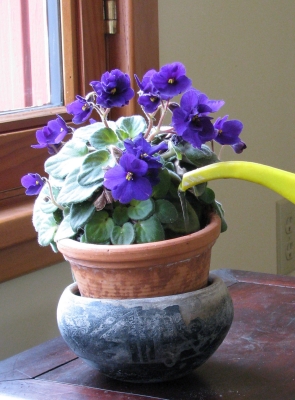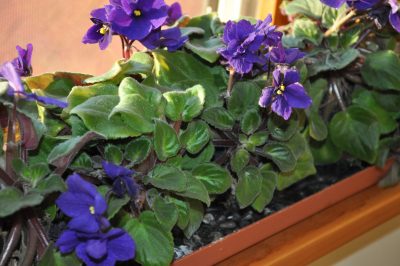REVEALED
Only for Gray-Haired Ladies?
I’m coming out. Today. Let me explain.
Decades ago, when just starting getting my hands in the dirt, I — perhaps other people, perhaps it was even true — thought it was only gray-haired ladies who grew African violets. As it turns out, a number of years after I had started gardening, I was offered an African violet plant (by a gray-haired lady). Back then, before I had accumulated too many plants, I was less discriminating than I am these days. I accepted.
I figured I could provide the special conditions African violets demand, according to what I read in numerous publications. “Proper watering and soil moisture is critical to your success,” I was told by one publication. I could provide the needed consistently moist soil with a potting mix especially rich in peat, compost, or some other organic material. I could monitor the plants thirst by lifting the pot to feel its weight or by periodic probing its soil with my electronic moisture meter.  I could of course be careful to avoid leaf spotting by not spilling any water, especially cold water, on the leaves. Watering from below would do the trick, with periodic leaching from above to prevent buildup of salts. They also like high humidity.
I could of course be careful to avoid leaf spotting by not spilling any water, especially cold water, on the leaves. Watering from below would do the trick, with periodic leaching from above to prevent buildup of salts. They also like high humidity.
Other requirements of African violets that were and are stated are temperatures 70-90 degrees (F) by day and 65-70 degrees at night. I was also admonished to keep an eye out for pests, including aphids, cyclamen mites, and mealybugs, and symptoms of disease. Root rot, for example.
Oh, and regular feeding should be administered except when resting (to the plants, not me).


